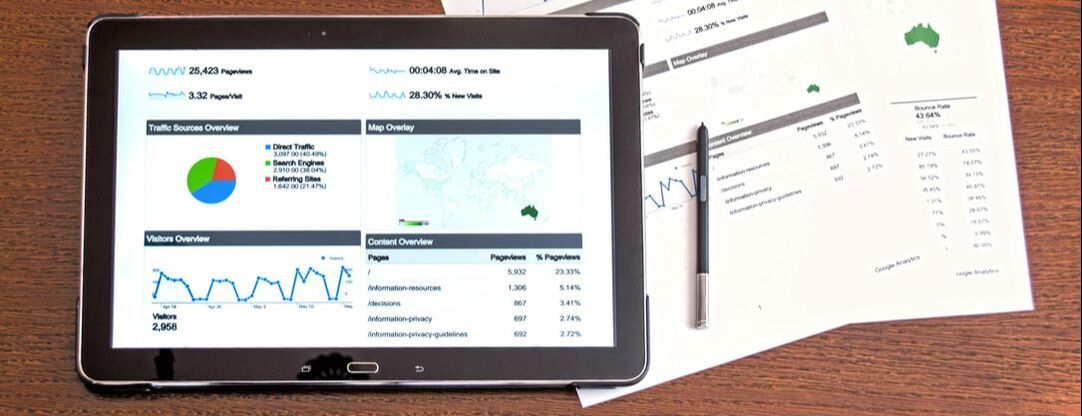Regular review of a comprehensive b2b marketing dashboard can really up level your effectiveness, credibility, and career. I put together this list of my ultimate collection of reports and metrics.
- Top Level Success Metrics (Build Pipeline, Win Together)
- Demand Generation
- Marketing sourced opps vs goal (M,Q.Y)
- # of MQLs vs goal by month (M,Q.Y)
- Account Based Marketing & Sales:
- Opps at target accounts
- MQL’s at target accounts
- Internal Customer Success Metrics
- Sales bookings by team vs goal (M,Q.Y)
- Sales bookings by rep vs quota (M,Q.Y)
- SDR goal attainment by team (M,Q.Y)
- SDR goal Attainment by SDR (M,Q.Y)
- Demand Generation
- Demand Generation (Achieve a practitioners understanding of leading indicators for pipeline creation and bookings, as well as channel/program results)
- New Business Funnel (marketing sourced only):
- # of Names captured - and % of goal attainment (M, Q, Y)
- # of Marketing engagements (campaign responses) - and % of goal attainment (M, Q, Y)
- % of Marketing engagement which are prospects - and % of goal attainment (M, Q, Y)
- MQLs - and % of goal attainment (M, Q, Y)
- SALs - and % of goal attainment (M, Q, Y)
- SQLs - and % of goal attainment (M, Q, Y)
- Opps - and % of goal attainment (M, Q, Y)
- CW Opps (# and Booking $’s) - and % of goal attainment (M, Q, Y)
- Funnels by Channel/Thematic Campaigns/Program (Table)
- # of Names captured
- # of Marketing engagements (campaign responses)
- % of Marketing engagement which are prospects
- Cost per Marketing engagement which are prospects
- MQLs – Actual vs Forecast
- Cost per MQL
- Opps – Actual vs Forecast
- Cost per Opp
- CW Opps
- Channel/Thematic Campaigns/Program ROI
- Account Based Marketing & Sales
- New Business:
- ABM Selection
- # of ABM targets by team vs quota
- # of ABM targets by rep vs quota
- ABM Funnel
- Total target Accounts identified as such by month
- New target accounts identified by month
- Target accounts with marketing activity by month
- Qualified contacts with marketing activity at target accounts by month
- Qualified contacts with Marketing engagements by month
- MQL’s at target accounts by month
- SALs
- SQLs
- Opps
- CW Opps (# and Booking $’s)
- ABM Data
- Target account profile scorecard completed by month
- % of Target accounts with more than X qualified contacts
- ABM Selection
- Cross-Sell into Customer Base
- Customer Product Share
- Total Customer #
- % of ARR revenue by Product
- # of Customers by Product
- ABM Funnel (by Product)
- # of Customers who are realistic prospects for Product
- Customer accounts with product focused marketing activity by month
- Qualified contacts at customer accounts who received product focused marketing activity by month
- Qualified contacts at customer accounts who received product focused marketing engagements by month
- MQL’s at customer accounts by month
- SALs
- SQLs
- Opps
- CW Opps (# and Booking $’s)
- Customer Product Share
- New Business:
- Email Marketing
- Sender score by month
- Size of mailable database by month, by segment (Lead type (prospect, customer, or partner), GEO, or other)
- # emails sent by month by type (auto-response, nurture, product announcements, content, cross-channel promotions (webinar invite, tradeshow invitation, etc), etc)
- # of clicks by month by type (auto-response, nurture, product announcements, etc)
- # of unsubscribes by month by type (auto-response, nurture, product announcements, etc)
- Email performance by email
- Sent #
- Delivery %
- Open %
- CTO %
- Unsub %
- Click to unsub ratio
- SEM (Google Ads, etc)
- Impressions
- Impression share
- Conversions (clicks)
- Conversion %
- Cost per Conversion
- Leads
- Form Conversion %
- CPL
- Prospects %
- CPP
- Social Ads (Linkedin, Facebook, etc)
- Impressions
- Conversions (clicks)
- Conversion %
- Cost per Conversion
- Leads
- Form Conversion %
- CPL
- Prospects %
- CPP
- Referrals (by referral type – customer, internal, partner, etc)
- Leads submitted
- Leads accepted
- Acceptance %
- Referral win rate compared to non-referral win rate
- New Business Funnel (marketing sourced only):
- Tracking Internal Customer Success & Hand-offs (Accidents Happen At Intersections)
- Intersection of Marketing and Sales Development
- # of Unassigned MQLs by Age
- # of Unworked MQLs by Age
- Meetings scheduled by month
- % Meetings scheduled which were held
- % of Meetings scheduled which advanced in stage
- MQL DQ %
- MQL Recycles – by reason
- SDR Activity by Month – inbound vs outbound
- SDR headcount vs Plan
- Intersection of Marketing and Sales
- Marketing sourced opp win rate vs sales sourced opp win rate
- Marketing sourced opp win ACV vs sales sourced ACV
- Marketing sourced time to close vs sales sourced time to close
- Marketing sourced opp % of total sales pipeline
- Sales headcount vs plan
- Intersection of Marketing and Sales Development
- Website (Your Biggest Marketing Asset)
- Unique users per month (annotated with hypothesis for spikes and dips)
- Sessions by source by month
- Web leads/users ratio by month
- Competitor google trends report
- Top 20 pages by traffic
- Top 20 referrers
- Site uptime by month
- Average page load speed by month
- SEO
- Organic traffic by month
- Branded vs unbranded organic traffic
- Competitor report
- Domain authority
- traffic comparison
- # of Pages optimized and updated by month
- Page Ranking for top 20 terms over time
- Referral links built by month
- Press Relations & Analyst Relations (Set Goals and Track Activity)
- Website traffic by month
- # of press releases by month vs goal
- # of articles/podcasts/content published by third party featuring or mentioning company by month vs goal
- # of calls held with analysts vs. goal
- # of mentions in analyst reports vs. goal
- Content Marketing (Content Fuels Modern B2B Marketing)
- Website Traffic by month
- Blog traffic by month
- Content published vs goal (using point system)
- Integrating content – internal customer adoption
- Integrating and disseminating content via marketing channels:
- # of new published assets on website by month
- # of First email promotion of content by month
- # of blog posts published referencing new content
- # of infographics published
- # of Videos published
- # of podcasts published
- # of social posts referencing new content
- Integrating and disseminating content via Sales/BDR:
- # of sales focused or requested assets published by month
- Internal sales downloads
- Integrating and disseminating content via marketing channels:
- Sales Enablement (Empower Sales People to Close)
- Opp Win rate by quarter by sales team
- # of sales enablement trainings held by month (including campaign briefings) by sales team
- Sales satisfaction with sales enablement survey results (quarterly)
- I feel I am made aware of upcoming marketing campaigns and how best to utilize them?
- I feel I am adequately trained on and have access to company messaging, competitive intelligence, product marketing, and customer use cases?
- Customer References
- # of referenceable customers by key category(s) (size, industry, geo, etc)
- # of reference calls held by month
- Sales satisfaction with references available survey results (quarterly)
- Sales satisfaction with reference calls held survey results (sent following reference call)
- Operations & HR (Maximize productivity)
- Budget allocated vs spent
- Marketing headcount vs plan
- PTO used vs allocation
- Furthering education funds used vs allocation
- Volunteering hours used vs allocation
- Internal promotions vs goal
What did I miss? Leave a comment if there is a metric you think we all could benefit from tracking!



 RSS Feed
RSS Feed